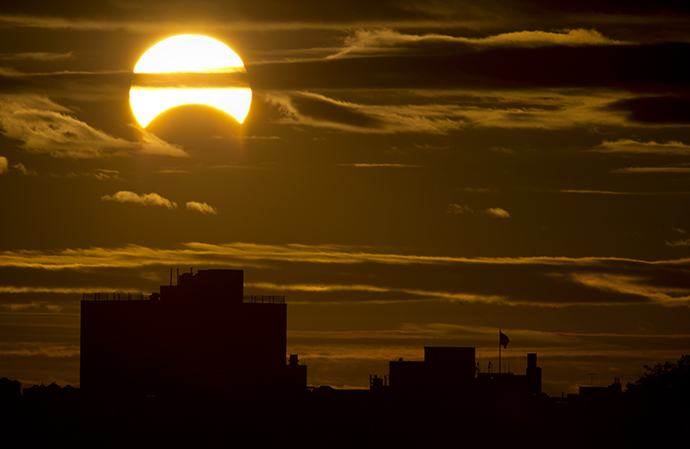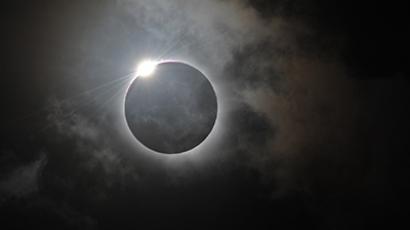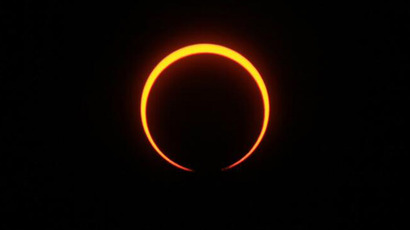A must-see: Rare solar eclipse sweeps across the world

A rare "hybrid" solar eclipse, hailed as "the most interesting eclipse of the year", has swept across parts of Africa, America and Europe on Sunday.
A solar eclipse occurs when the moon passes between the Sun and the Earth casting a shadow on the Earth. It's a rare event because this is a hybrid type. During a total eclipse, the Moon fully covers the Sun, whereas in the annular variety the Moon doesn't totally block out the Sun, leaving a halo of sunlight visible around the Moon.

A hybrid eclipse usually starts and ends as an annular event,
although it appears as a total eclipse in the middle.
According to NASA, this Sunday's eclipse has been even more
unique as it started annular and ended as a total eclipse.
Thanks to the round shape of the Earth, lucky enthusiasts in West Africa had a chance to observe a total eclipse, while others in Europe and in the US only saw the sun partly obscured.

The eclipse began about 1,000 kilometers east of Jacksonville,
Florida, with an annular eclipse visible for four seconds at
sunrise.
The greatest part of the eclipse took place over the Atlantic
Ocean, about 330 kilometers southwest of Liberia, at 12:47 GMT,
lasting one minute and 39 seconds.
A state on the west coast of Central Africa, Gabon, got peak
viewing of the total eclipse sweeping over a path some 60
kilometers wide. At its peak, the sun was blocked out for about
one minute.
The eclipse then continued across Africa through the Congo until
it passed through northern Uganda and northern Kenya, ending in
southern Ethiopia and Somalia. In northern Kenya, the eclipse
lasted about 10 seconds.

















